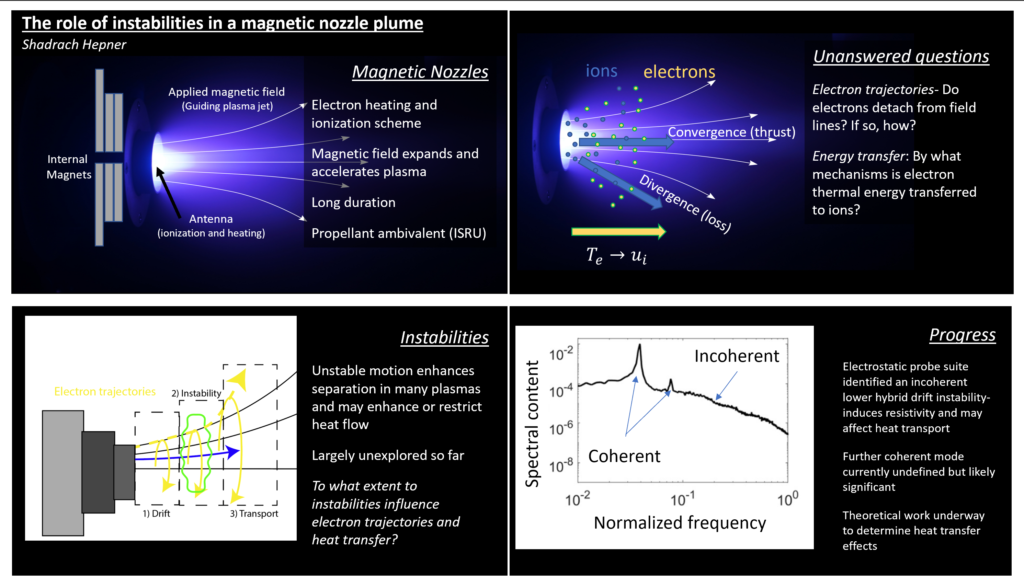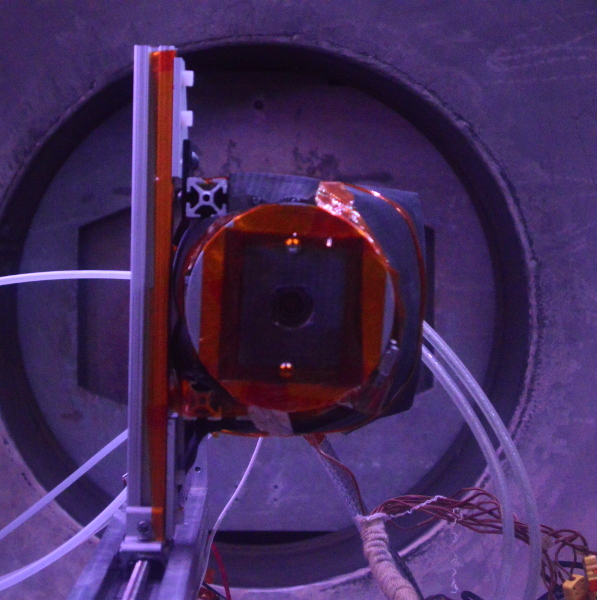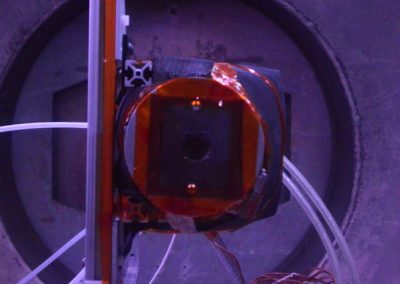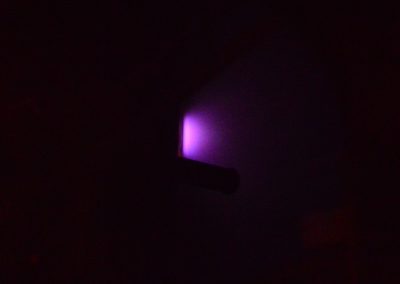Project
Plasma Detachment from Magnetic Nozzles
project personnel
principal investigator
Benjamin Jorns
previous personnel
Tim Collard, JP Sheehan, Frans Ebersohn, Shadrach Hepner, Thomas Marks
project sponsors
NASA
associated thrusters
CAT
Magnetic nozzles consist of a converging-diverging magnetic field arrangement meant to supersonically accelerate a plasma. Since plasma streamlines tend to follow magnetic field lines, it can cool by expansion throughout the nozzle by a mechanism similar to that of a de Laval nozzle. This expansion converts the thermal energy of the electrons into bulk ion motion. Since magnetic nozzles do not require any electrodes, they are capable of performing on extended missions. They are also able to use a variety of propellants, potentially allowing in-flight refueling. While nozzles are being investigated for high-power applications, at PEPL we focus primarily on lower-power devices, ideal for small satellites or CubeSats.
Before magnetic nozzles can be reliably flown in space, however, the problem of detachment must be better understood. As the magnetic field lines of the nozzle will inevitably return to the thruster, the plasma may follow the lines back, negating thrust. We generally assume that ions are unmagnetized, having too high inertia to be affected by the magnetic fields directly. However, electrons may remain attached, expanding with the magnetic fields and generating radial electric fields that will cause the ions to appear attached as well. We still have no reliable way of predicting the detachment point in these devices, but multiple theories have been proposed. These include resistive detachment, electron inertia effects, electron demagnetization, magnetic field line stretching, and the onset of instabilities.
The magnetic detachment experiment (MDX) is a variable magnetic field inductively coupled plasma source that we have historically used for this study. It was developed by Timothy Collard to provide a means for investigating detachment. This work focused largely on the impact of electron collisions with neutrals as a means of separating the plasma from the magnetic field. Recently, more work has been done on an electron cyclotron resonance source, which uses microwave power to generate a plasma and a set of permanent magnets to direct it axially. We are now using this source to investigate the presence of instabilities on electron dynamics using a combination of experimental and computational methods. Instabilities have been known to induce anomalous resistivity that separates electrons from field lines in other devices, and we are learning that they may be significant in magnetic nozzle physics as well.

Selected Publications
Kinetic Method for Quasi-One-Dimensional Simulation of Magnetic Nozzle Plasmadynamics
Ebersohn, F.
Kinetic simulation technique for plasma flow in strong external magnetic field
Ebersohn, F.H., Sheehan, J.P, Gallimore, A.G, and Shebalin, J.V.
Observation of Low Frequency Plasma Oscillations in the Plume of a Partially Magnetized Magnetic Nozzle
Hepner, S.T., Wachs, B.N., Collard, T.A., and Jorns, B.A.
The Impact of Non-Idealities on Low Power Magnetic Nozzle Thrust Performance
Collard, T. A. and Jorns, B. A.
Magnetic nozzle efficiency in a low power inductive plasma source
Collard, T.A., and Jorns, B.A.
Wave-Driven Non-Classical Electron Transport in a Low Temperature Magnetically Expanding Plasma
Hepner, Shadrach; Wachs, Benjamin; Jorns, Benjamin
The role of low frequency drift waves in driving non-classical transport in magnetic nozzles
Shadrach T. Hepner and Benjamin Jorns
Hall2De Simulations of a Magnetic Nozzle
Thomas A. Marks , Ioannis G. Mikellides , Alejandro Lopez Ortega and Benjamin Jorns
Anomalous electron thermal conductivity in a magnetic nozzle
Shadrach Hepner and Benjamin A. Jorns




